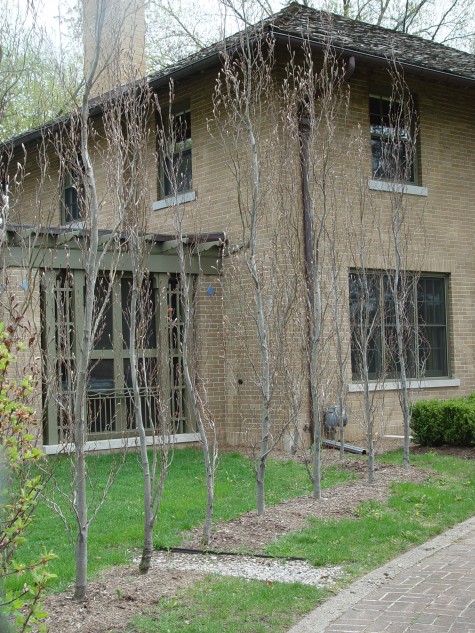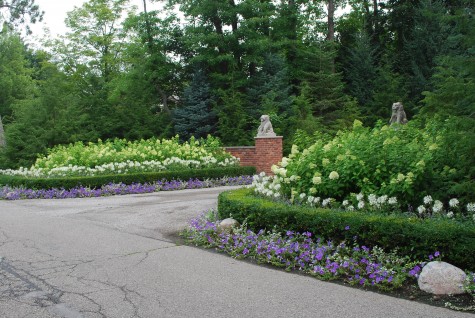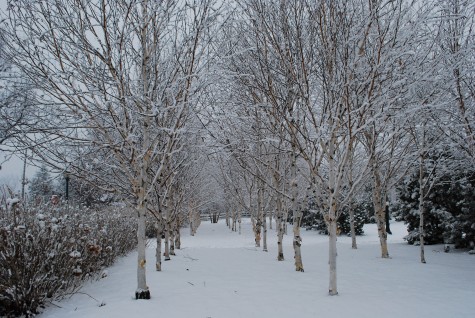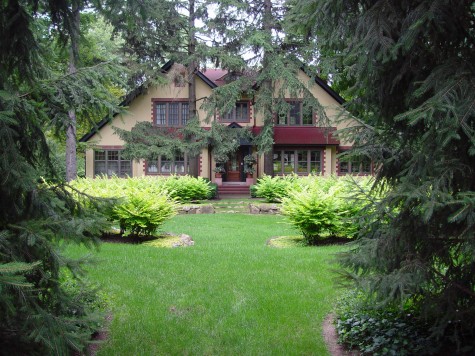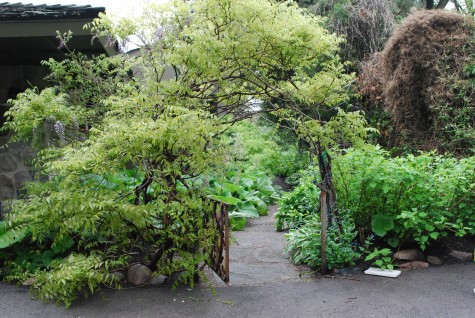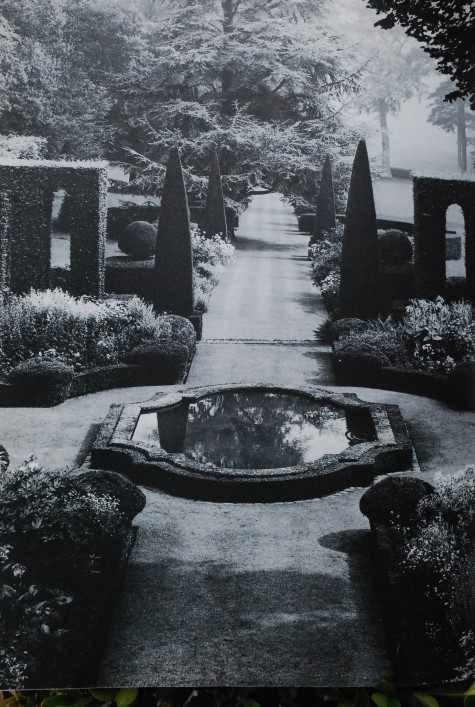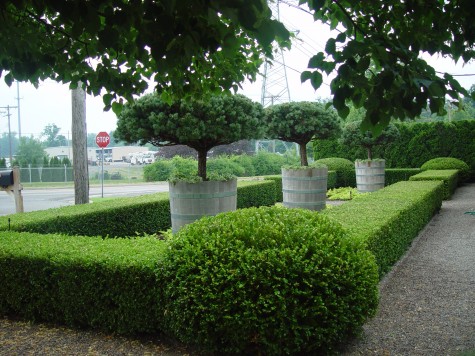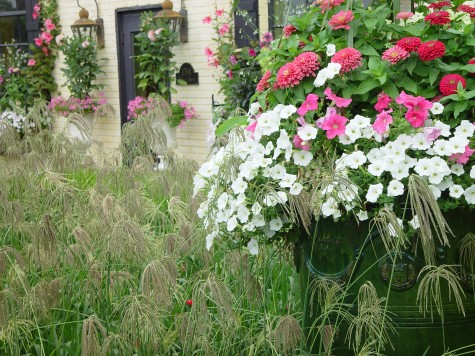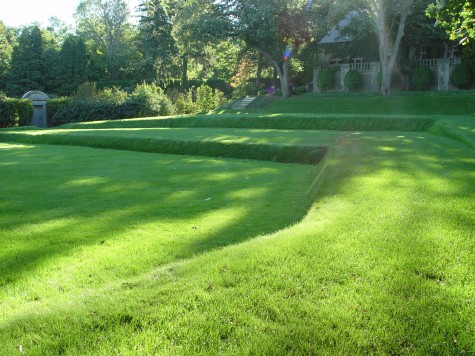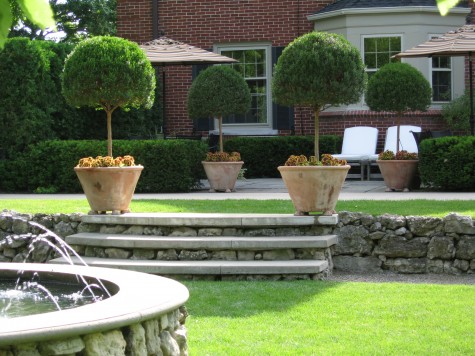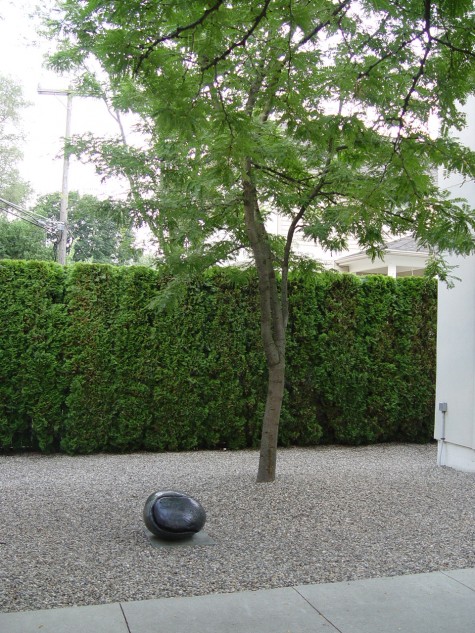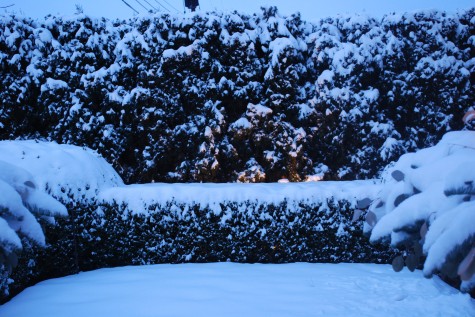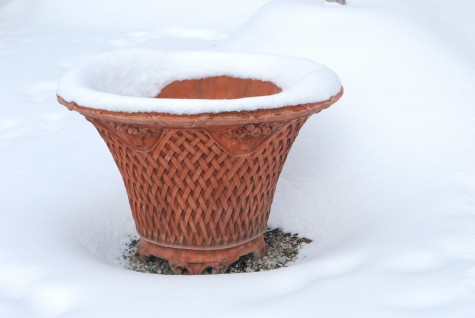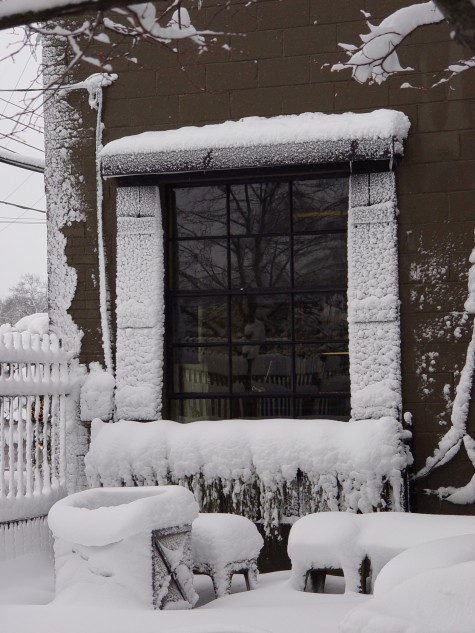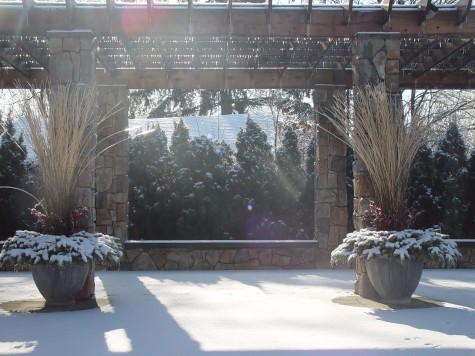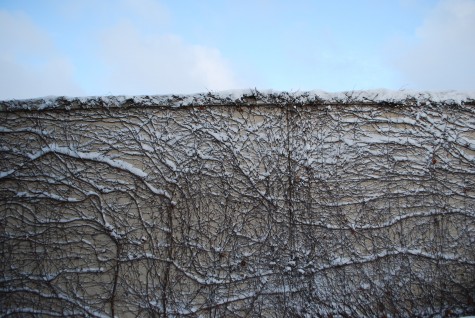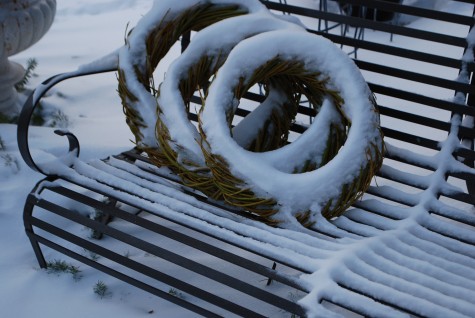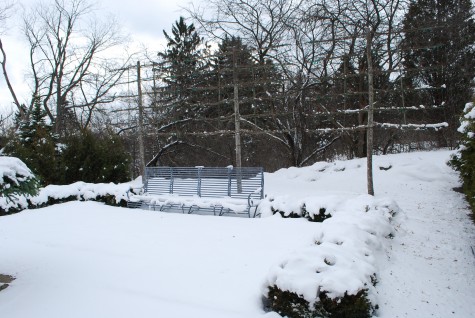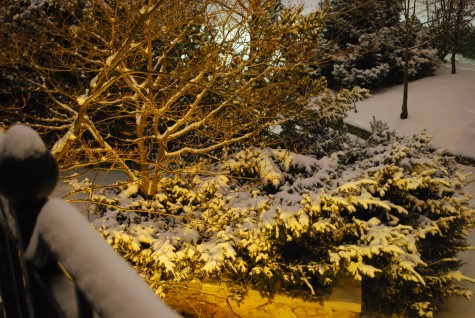Leafy plants, more formally known as deciduous plants, are essential to a great landscape. Though evergreens can provide a certain kind of dense and geometrically gratifying presence in a landscape, deciduous plant material have a textural contribution all their own. I designed and planted this landscape many years ago. Four English oaks, some 14 years later, now provide an overhead structure for the drive court. The biggest technical challenge was providing flat ground for parking to the right of the driveway. That accomplished, the U-shaped triple thickness yew hedges do a great job of describing level ground, and screening a parking area from view. The maturing oaks provide overhead structure to this space. They have great size, heft, and presence.
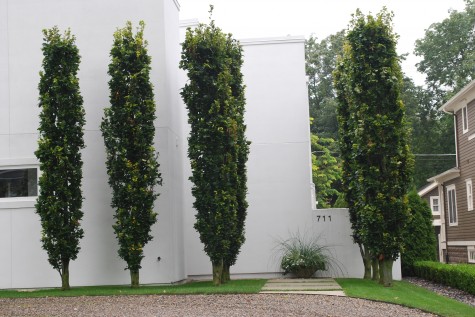
Deciduous trees can go a long way towards endowing a landscape with structure. These columnar beech were planted more than 15 years ago. Each one has been planted and maintained as if they were individual living sculptures. These leafy trees compliment the architecture without obscuring it.
Smaller columnar beech planted fairly close together will eventually form a hedge of a height to be determined. This beech hedge is fairly new. Given some age, these trees will grow together to form a leafy structure in the summer, and a densely twiggy screen in the winter. A single beech, planted in an open area that permits it to grow unobstructed is a specimen. Multiple beech planted in a line are structural, as they have more visual significance as a wall. Multiple beech planted in a block, or shape, are as much about sculpture as they are about beechiness.
Annabelle hydrangeas are difficult to place in a landscape. The flower heads are large, and the stems weak. I rarely plant them, unless I have a chance to place them on sloped ground. They can provide great structure on a sloped site. I hate having to prop them up-I prefer to plant them on top of a wall. Their large leaves, and extraordinary flower heads can structure a landscape space beautifully, given a proper placement.
Carpinus, or hornbeam, is a tree eminently suited to provide structure to a landscape. They grow large. They tolerate pruning well. These 30 foot tall carpinus settled down in a new home some 8 years ago without much fuss. Are they thriving-yes. The late spring freeze in 2007 resulted in some twiggy dieback, but they have since grown out of the insult. They now structure a garden, a fountain, and a collection of roses-affably.
Carpinus is a favorite tree when I am seeking structure in a landscape. These columnar carpinus created a leafy pergola that to this day, many years later, organizes a landscape, provides shelter, and visually endows a landscape. These carpinus have been limbed up; the bare lower trunks mimic the poles or columns of a pergola.
Limelight hydrangeas-if you read this blog regularly, you know I am a fan. This leafy deciduous shrub needs little in the way of maintenance. The large leaves, the long lived blooms, and its sturdy habit of growth make it a great source of structure in a garden. The annual plantings would have little impact without the strong structure provided by the boxwood, and the hydrangeas. 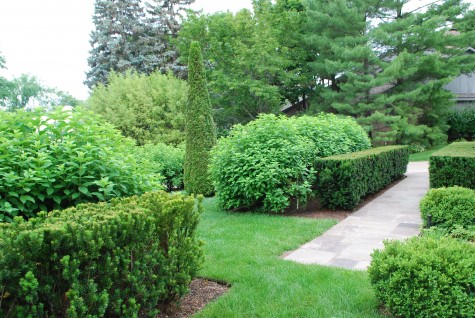
Even when the Limelights are in their green stage, they happily provide structure to a landscape. In the winter, the dry flower heads and twigs are an effective contrast to evergreens.
Winter structure is important in my zone. Winter always lasts longer than I think it will. The white bark and lacy branch structure of this Himalayan white barked birch is as beautiful during snowy weather as it is during the summer months. The hedge of Annabelle hydrangeas in the left of this picture-densely twiggy.
Gold vicary is a shrub that was much more common in the landscapes of my childhood than it is now. Why is that? Plants fall in and out of favor just like anything else. The lime green leaves are strikingly different than the dark green of the spruce needles. As a single specimen, the color can be difficult to balance. This circular planting of gold vicary encloses a rustic sunken garden planted simply with grass.
An old wisteria trained over, and about to overpower the gated entrance to this garden is a great example of how any leaafy plant has the potential to organize the presentation of a garden.

